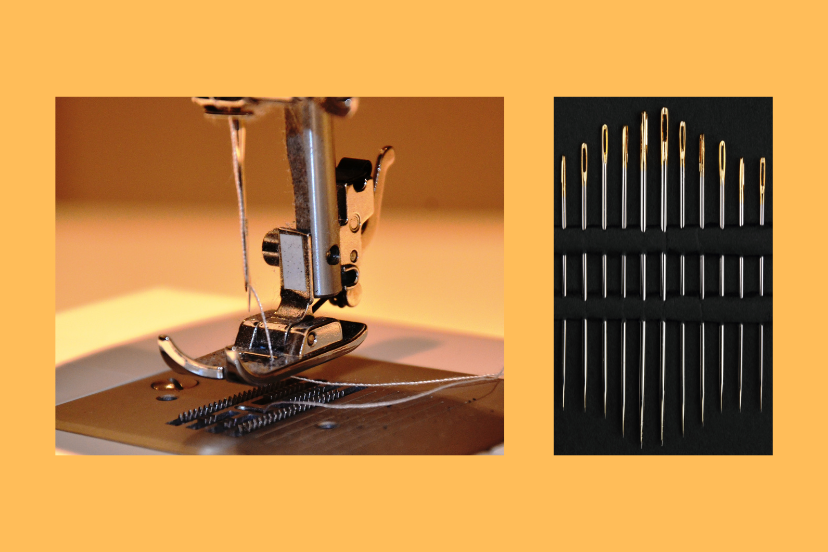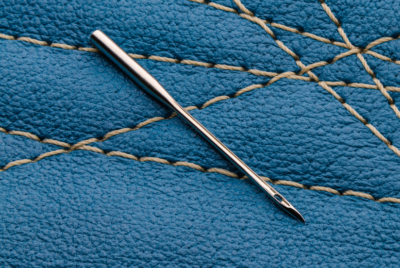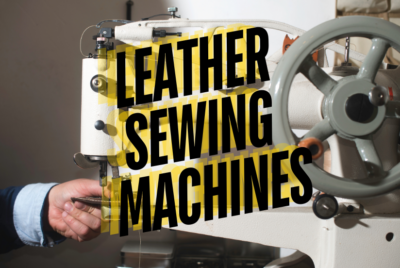Sewing Machine Needles: An Essential Tool
As an enthusiast in the vintage sewing machine niche, I understand the importance of using the right needles for optimal performance. Sewing machine needles are often overlooked, but they play a crucial role in achieving precise and quality stitching.
Here are some insights and suggestions on selecting, maintaining, and troubleshooting needles to help you enhance your sewing experience.
The Role Sewing Machine Needles Play
Needles are not mere accessories. They are an integral part of the precision tools that directly impact the quality of your stitching.
Vintage sewing machines, with their mechanical marvels, require needles that can withstand the demands of various fabrics and stitch patterns. Therefore, understanding the significance of needles is fundamental to achieve exceptional results.
When searching for needles for your specific vintage sewing machine, it’s essential to consider the machine model and its needle compatibility. Our post, “Sewing Machine Needle Guide” provides a list of manufacturers websites that you can use to investigate what needle you might require.
Needles as Precision Tools
Just like a painter needs a fine brush, a vintage sewing machine needs a suitable needle. Needles determine the stitch formation, tension, and fabric penetration.
By choosing the right needle, you ensure that the fabric is handled delicately and the thread is properly looped, resulting in even and beautiful stitches.
Compatibility and Needle Types
When it comes to vintage sewing machines, compatibility is key. Not all needles are suitable for every machine. Different models and manufacturers have specific needle requirements.
It is crucial to consult your sewing machine’s manual or seek advice from experts to determine the compatible needle types. Using the wrong needle can lead to skipped stitches, tension issues, or even damage to the machine.
Selecting the Right Needle for Vintage Sewing Machines
Assessing Machine Requirements
Before selecting a needle, assess your vintage sewing machine’s requirements.
Consider the type of fabric you’ll be working with, the desired stitch length, and the complexity of your project. This evaluation will help you choose the needle size, point type, and specialty needles, if needed.
Needle Size and Fabric Compatibility
Needle size plays a significant role in achieving optimal stitch quality. It is essential to match the needle size to the fabric weight. Thicker fabrics require larger needle sizes, while delicate fabrics need finer needles.
A mismatched needle size can cause fabric damage, uneven stitches, or thread breakage. Choose the appropriate needle size to ensure smooth and precise stitching.
Needle Point Types
Needles come in various point types, each suited for specific purposes.
For general sewing, universal or sharp-point needles work well. However, for specialized fabrics or techniques, consider using specific needle points like ballpoint, stretch, or leather needles.
Understanding the characteristics of each point type will help you select the right needle for your project.
Specialty Needles for Vintage Machines
Vintage sewing machines often require specialty needles due to their unique mechanisms.
Needles specifically designed for vintage machines ensure smooth operation and reduce the risk of damage. Consult experts or search for compatible specialty needles for your vintage sewing machine to maintain its longevity and performance.
Maintaining Needles for Optimal Performance
Cleaning and Lubricating Needles
Regular needle maintenance is vital for optimal performance. Clean your needles regularly to remove lint, fabric fibers, and any residue that may accumulate during sewing. Use a lint brush or soft cloth to gently clean the needle’s surface. Additionally, lubricating the needle with a drop of sewing machine oil ensures smooth operation.
Changing Needles Regularly
Needles wear out over time, and using a dull or damaged needle can affect your stitching quality. As a general rule, it is recommended to change needles after every 8-10 hours of sewing or when starting a new project.
By regularly replacing needles, you ensure consistent stitch quality and reduce the risk of fabric damage.
Proper Needle Storage
Storing needles properly is crucial to prevent damage and maintain their sharpness. Use a designated needle case or magnetic holder to keep your needles organized and protected.
Avoid storing needles near magnets, as they can demagnetize the needle, affecting its performance. With proper storage, your needles will stay in top condition and ready for your next sewing endeavor.
Troubleshooting Vintage Sewing Machine Needles
Common Needle Problems
Even with proper care, needle issues may arise while using vintage sewing machines. Common problems include skipped stitches, thread breakage, or inconsistent tension. Understanding the root causes will help you diagnose and resolve these issues effectively.
Diagnosing and Solving Needle-related Issues
When encountering needle-related problems, start by examining the needle itself. Ensure it is properly inserted, secure, and correctly oriented. Check for any visible damage or bent points. If the needle appears fine, review your threading technique, bobbin winding, and tension settings. Often, minor adjustments or rethreading can resolve needle-related issues.
Consulting Professionals for Complex Problems
In some cases, needle-related problems may persist despite your efforts. If you encounter complex or recurring issues, it is advisable to seek assistance from professionals or vintage sewing machine specialists. Their expertise and experience can help diagnose and repair any underlying mechanical issues that may be affecting needle performance.
Conclusion
In the world of vintage sewing machines, needles are essential tools that should not be underestimated.
By selecting the right needles, maintaining them properly, and troubleshooting needle issues, you can enhance your sewing experience and achieve remarkable results.
Remember to consider your machine’s requirements, fabric compatibility, and the importance of regular maintenance. Embrace the precision and artistry that vintage sewing machines offer with the help of suitable needles.
FAQs
How often should I change needles in my vintage sewing machine?
It is recommended to change needles after every 8-10 hours of sewing or when starting a new project. Regularly replacing needles ensures consistent stitch quality and reduces the risk of fabric damage.
Can I use any needle with my vintage sewing machine?
No, not all needles are compatible with every vintage sewing machine. Different models and manufacturers have specific needle requirements. Refer to your machine’s manual or seek advice from experts to ensure you use the appropriate needles.
What needle size should I use for thicker fabrics?
Thicker fabrics require larger needle sizes. Choose a needle size that is suitable for the weight and thickness of the fabric to ensure smooth and precise stitching.
How should I clean my needles?
To clean needles, use a lint brush or soft cloth to gently remove lint, fabric fibers, and residue. Keep the needle’s surface clean for optimal performance.
What types of specialized needles are there?
There are several types of specialized needles. Each one is used for different types of projects. The different types of sewing needles are sharps, ballpoint, universal, quilting, embroidery, leather, twin, and metallic.
What should I do if I encounter recurring needle-related issues?
If you encounter complex or recurring needle-related issues despite your efforts, it is best to consult professionals or vintage sewing machine specialists. They can provide expert advice and help diagnose any underlying mechanical problems.
RetroSewMachines.com is a participant in the Amazon Services LLC Associates Program. As an Amazon Associate, we earn from qualifying purchases. We also participates in other affiliate programs and may earn a referral commission if you purchase through links on this website. The information presented here is for general educational purposes only.





Comments are closed.